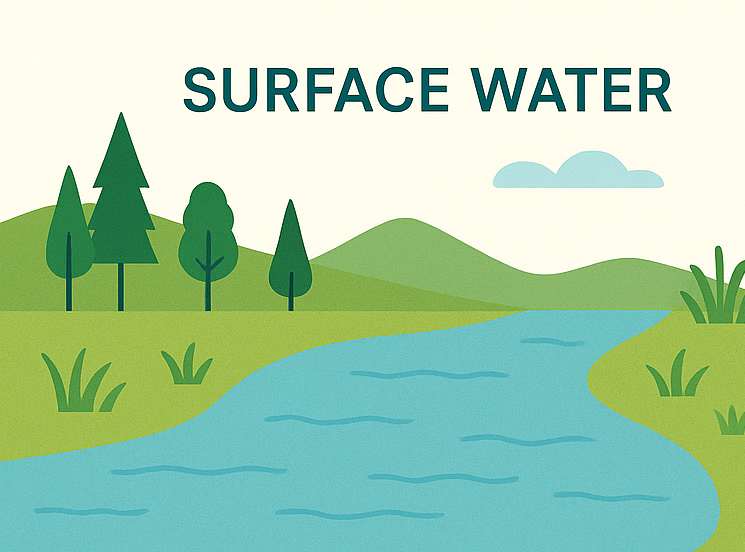Portable Turbidity Meters for Environmental Monitoring

Introduction
Turbidity is a key indicator of water quality and is commonly used in environmental monitoring to assess the clarity of water bodies such as rivers, lakes, and coastal regions. It refers to the cloudiness or haziness of a fluid caused by suspended solids that are usually invisible to the naked eye. The accurate and timely measurement of turbidity is crucial in identifying pollution sources, evaluating ecosystem health, and complying with environmental regulations (Davies-Colley & Smith, 2001). Portable turbidity meters have become invaluable tools in field-based environmental monitoring due to their convenience, accuracy, and adaptability.
Principle of Operation
Portable turbidity meters measure the amount of light scattered by particles suspended in water. Most modern devices use nephelometric technology, in which a light beam is directed into the water sample and sensors detect the intensity of light scattered at a 90-degree angle. The results are reported in Nephelometric Turbidity Units (NTU) (USEPA, 1999).
Applications in Environmental Monitoring
1. Surface Water Quality Assessment
Portable turbidity meters are extensively used to assess rivers, lakes, and reservoirs. Elevated turbidity levels can indicate runoff from agricultural areas, erosion, or discharge from industrial and municipal sources. Continuous monitoring allows environmental scientists to detect trends and respond quickly to changes (Lloyd et al., 1987).

SURFACE WATER
2. Stormwater and Urban Runoff Evaluation
Monitoring turbidity in stormwater helps to quantify sediment loads carried into natural water bodies during rainfall events. Portable meters enable real-time measurement in various locations, supporting the development of effective stormwater management practices (EPA Victoria, 2003).

STORMWATER AND URBAN RUNOFF EVALUATION
3. Construction and Mining Impact Studies
These industries often cause soil disturbance, leading to sediment-laden runoff. Regular turbidity monitoring near construction or mining sites ensures compliance with environmental permits and helps in mitigating downstream ecological impacts (Bilotta & Brazier, 2008).

CONSTRUCTION AND MINING
4. Drinking Water Source Protection
Protecting raw water sources from contamination is vital. Turbidity can serve as an early warning indicator for microbial contamination, especially during heavy rains (LeChevallier et al., 1981). Portable meters allow water utilities and environmental agencies to perform on-site assessments quickly.
5. Aquatic Habitat Monitoring
Turbidity affects photosynthesis in aquatic plants and the health of fish and invertebrates. Field measurements using portable turbidity meters contribute to ecological assessments and restoration efforts by providing reliable data on sediment levels in critical habitats (Henley et al., 2000).
Advantages of Portable Turbidity Meters
- Mobility and Ease of Use: Designed for use in the field, these devices are compact, battery-powered, and user-friendly, allowing rapid deployment in remote locations.
- Real-Time Data Collection: Instant results support immediate decision-making and adaptive management strategies.
- High Accuracy and Sensitivity: Modern meters offer laboratory-grade precision, suitable for both low and high turbidity levels.
- Durability: Rugged designs ensure reliable operation in harsh environmental conditions (APHA, 2017).
Limitations and Considerations
While portable turbidity meters are highly effective, users must consider factors such as calibration frequency, interferences from colored dissolved substances, and sample handling procedures. Calibration with appropriate standards and adherence to best practices ensure the accuracy and repeatability of results (USEPA, 1999).
Conclusion
Portable turbidity meters have revolutionized environmental monitoring by providing accurate, on-site water clarity assessments. Their role is vital in supporting environmental protection, regulatory compliance, and sustainable water resource management.
References
- American Public Health Association (APHA). (2017). Standard Methods for the Examination of Water and Wastewater (23rd ed.).
- Bilotta, G. S., & Brazier, R. E. (2008). Understanding the influence of suspended solids on water quality and aquatic biota. Water Research, 42(12), 2849–2861.
- Davies-Colley, R. J., & Smith, D. G. (2001). Turbidity, suspended sediment, and water clarity: A review. Journal of the American Water Resources Association, 37(5), 1085–1101.
- EPA Victoria. (2003). Measuring turbidity in natural waters. Publication No. 734.
- Henley, W. F., Patterson, M. A., Neves, R. J., & Lemly, A. D. (2000). Effects of sedimentation and turbidity on lotic food webs: A concise review for natural resource managers. Reviews in Fisheries Science, 8(2), 125–139.
- LeChevallier, M. W., Evans, T. M., & Seidler, R. J. (1981). Effect of turbidity on chlorination efficiency and bacterial persistence in drinking water. Applied and Environmental Microbiology, 42(1), 159–167.
- Lloyd, D. S., Koenings, J. P., & LaPerriere, J. D. (1987). Effects of turbidity in fresh waters of Alaska. North American Journal of Fisheries Management, 7(1), 18–33.
- United States Environmental Protection Agency (USEPA). (1999). Method 180.1: Determination of turbidity by nephelometry. Revision 2.0.





